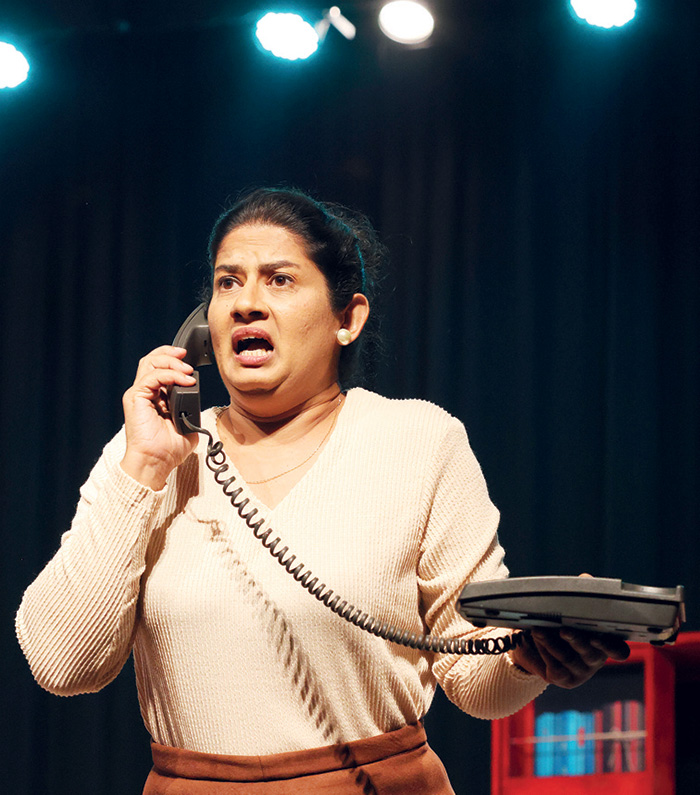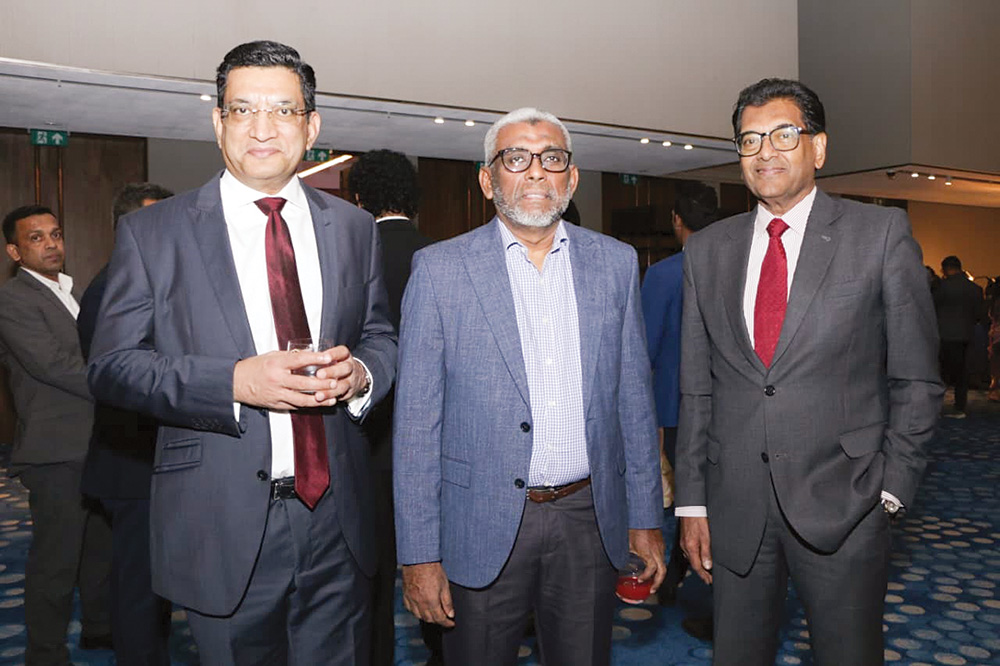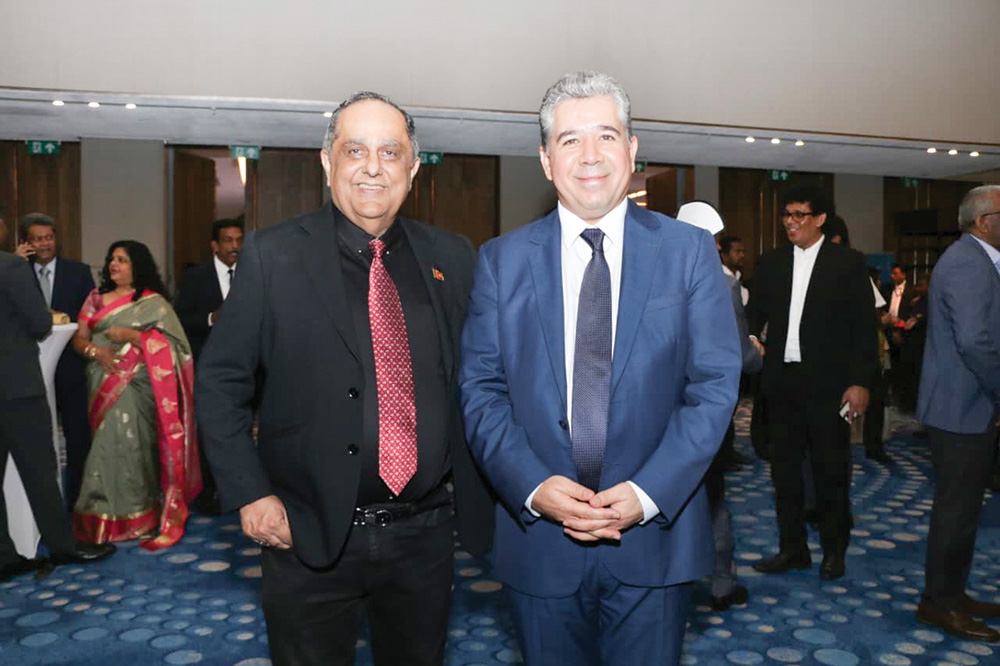Life style
Lawyers for a larger cause
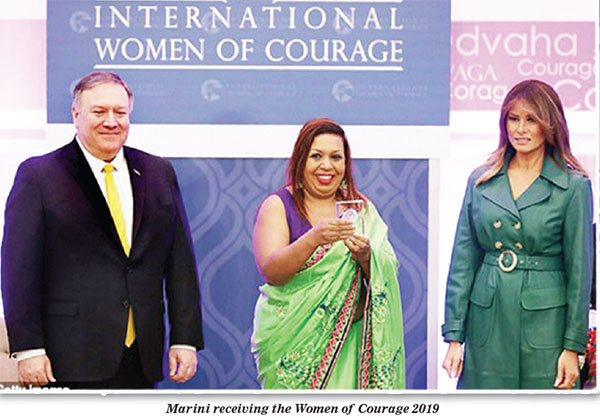
Sisters-at-Law, the free legal service supporting survivors of domestic and gender-based violence marks three years of yeoman silent service this month. Its founder Marini de Livera recaps its journey while urging more women lawyers to become change-makers.
by Randima Attygalle
“I have realized more and more that the right to access justice is a privilege enjoyed by the rich and the affluent of our society. Law is something that is discussed by the elite in air-conditioned offices and never reaches out to the communities. The poor and the down-trodden have no one to advise them when facing oppression and injustice. The Law is beyond their reach,” observes human rights lawyer Marini de Livera, the founder and the Chairperson of Sisters-at-Law, a free legal service supporting survivors of domestic and gender-based violence. De Livera’s efforts have been honoured with Commonwealth Points of Light Award in 2020 and Women of 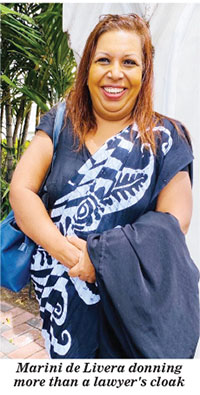 Courage (2019) from the US Department of State.
Courage (2019) from the US Department of State.
This former Chairperson of the National Child Protection Authority (NCPA) remarks that to bring about change, social justice and make the country and the world a happier place, there is no need to hold a top Government position or be highly connected. All that’s needed is “imagination, a vast amount of energy and unlimited passion.” As a legal academic De Livera saw the futility of Human Rights education within the confines of a classroom. “Without actually experiencing and listening to the stories of survivors, it is impossible to be an instrument of change and find solutions to problems that plague society, especially Human Rights violations. Thus, Sisters-at-Law (SAL) was born in August, 2018 to create awareness about the laws and policies relating to Human Rights and to promote activism through forms of art,” says the human rights trainer (for the army, police, public officials, and grassroots level leaders) who has also been a member of the Steering Committee on the Rehabilitation of Child Soldiers, the Prisons Reform Committee, and the National Committee on Women. De Livera also chaired the committee that drafted the amendments to the Prevention of Domestic Violence Act.
During the three years since its inception, SAL had represented survivors of violence in a number of pro bono cases from the Magistrate’s Court to the Supreme Court says its founder. Referrals are made by the courts and the Police to SAL which not only provides free legal representation but also empowers survivors. Located in Battaramulla within her legal chambers, D

e Livera has provided SAL with an inviting atmosphere where victims of violence can unwind, have a hot drink or a warm meal and decide on how they should proceed.
Filling the need for long term support for survivors, SAL has expanded to offer educational programmes, skills training and income generating activities beyond lodging facilities. Guided by people-centric and strength-focused principles, once a girl or a woman is admitted to a SAL’s shelter, she is asked what her dream is and a ‘Care Plan’ is prepared for each to realize her dream aligned with SAL’s belief that all girls and women deserve an opportunity to find their voice and potential while being able to live a dignified, peaceful and a happy life. “Based on the Care Plan we allocate funding by raising our own funds and also appoint a ‘Care Manager’ who ensures that all steps in the Care Plan are adhered to and the Senior Management reviews the Care Plan,” explains De Livera.
Largely self-funded, SAL finds it challenging to sustain its activities. “Initially we had two shelters, one in Colombo and the other in Galle. Due to lack of funds, we were forced to close down the Galle shelter,” says De Livera. A woman whose road has never been easy, she calls herself ‘unstoppable’ and is in the process of setting up SAL’s own dress making business to help more women and girls in need. A gifted artist and a Licentiate teacher in Speech and Drama from Trinity College London, De Livera uses art as a therapeutic means of healing and empowering survivors. She has her own street theatre group, with her own bird mascot Bindoo that travels around the country performing plays related to human rights issues.
Although the Prevention of the Domestic Violence Act of 2005 speaks of the need for shelters for victims of violence, there is still a dearth of them in the country, notes De Livera. Such shelters should not however be ‘prison-like’ unhappy places but ‘peaceful and safe heavens’ where survivors could take informed decisions relating to their future and train and empower themselves to function on their own, contribute to society and become productive citizen, she adds. Networking with members from the medical profession, religious leaders, psychologists and clinicians, educators, business sector etc. is imperative to build a support system for the survivors, observes SAL’s founder.
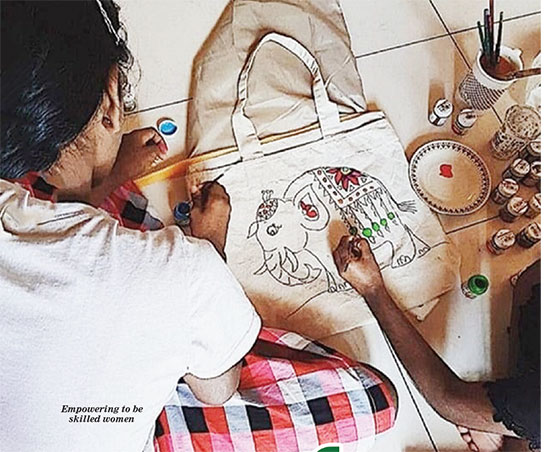
Urging young women lawyers to be change-makers, De Livera also says that they need more role models. “They also need to be sensitized and at SAL we make it happen in our own little way. We hope to train a pool of legal experts in all fields who can also represent the marginalized in court.” She reiterates that women lawyers need to be proactive to ensure that the concept ‘Women’s Rights are Human Rights’ become a reality. “Sri Lanka signed the CEDAW Convention in 1981. Yet to date no domestic law has been passed by our Parliament incorporating Women’s Human Rights enshrined in CEDAW into Sri Lankan Law. Women lawyers should advocate and lobby for law reform.” The Assistance to and Protection of Victims of Crime and Witnesses Act which was passed in 2015 provides for compensation to victims of a crime. However, the Victims’ Authority does not have a Fund to be used for this purpose, charges De Livera who goes on to remark that women lawyers should be trained to identify these issues and agitate for their realization.

Making a case for girls and women whose abuse is rampant and whose only option should not be to become a domestic worker, the activist lawyer calls fellow women to rally around to empower them at grassroot level. “There are graduates employed at every Divisional Secretariat. They function as representatives of all Cabinet Ministers in the capacity of Child Protection Officers, Women Development Officers and Probation Officers. In certain parts of the country these officers have prepare a document known as a ‘child vulnerability card’ that assesses the danger every child is exposed to.”

She also maintains that schools should work with the NCPA and the Probation Department and detect and track if school drop-outs are trafficked to Colombo and other cities by unscrupulous agents to earn money out of them. “Systems are already in place – it is only a matter of implementing them. Women lawyers in this country can be the driving force to advocate for the implementation of policies and laws,” concludes De Livera.
If you wish to support or rally around
Sisters-at-Law, write to helpsistersatlaw@gmail.com
Life style
Upali returns with Sinhala adaptation of Murdoch classic
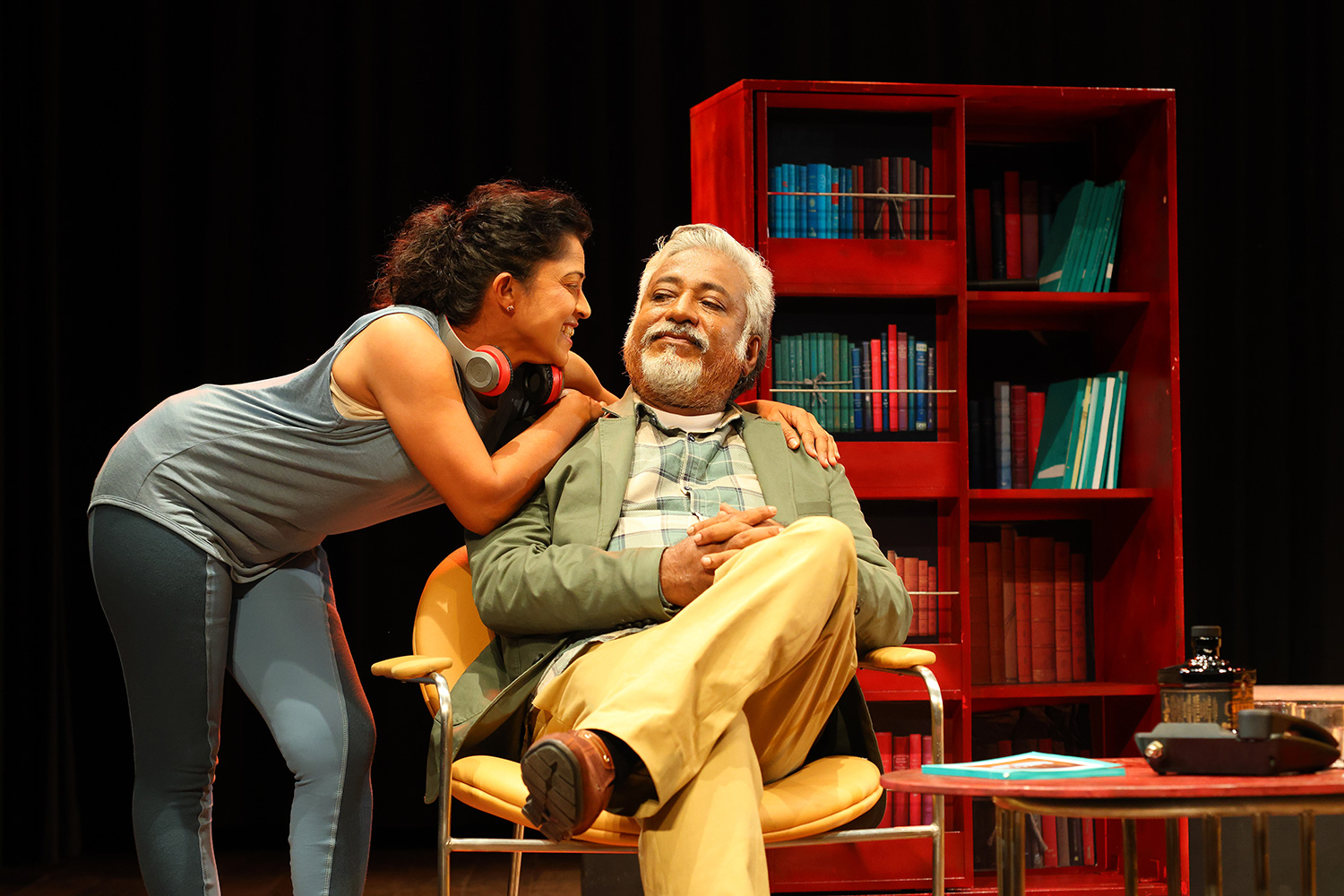
EMD Upali, a familiar name in both the Colombo Bar and the Sinhala stage, is gearing up to unveil his latest theatrical venture, Pavul Kana Minihek, the Sinhala adaptation of Iris Murdoch’s acclaimed novel The Black Prince. The play goes on board on December 6 at 7 pm at the open-air theatre of the Sudarshi Hall, Colombo.
Though not physically tall, he stands tall in fame. Upali’s open, friendly nature and ever-present smile make him a respected figure in both legal and theatrical circles. The veteran director is also remembered for introducing the late Jackson Anthony to the stage through his 1983 hit Methanin Maruwenu, a production that went on to win national acclaim.
But his journey began much earlier. As an undergraduate at the University of Colombo, he created Methanin Maruwenu for an inter-faculty drama competition in 1981 and walked away with the Best Director award. The reworked version won him another Best Director title at the 1983 State Drama Festival. Two years later, he repeated the feat with Piyambana Assaya.
Academic commitments kept him away from the stage until 1995, when he returned with Eva Balawa, a Sinhala adaptation of J.B. Priestley’s An Inspector Calls.
“Lucien de Zoysa first staged the English version at the Lionel Wendt in memory of his son Richard,” Upali recalls. “I adapted it into Sinhala using the script by my guru and friend, Upali Attanayake. Eva Balawa went on to win four State Awards, including Best Director (Adaptation).”
He followed this success with Chara Purusha (2000), adapted from Gogol’s The Government Inspector; Wana Tharavi, his staging of Ibsen’s The Wild Duck during the Ibsen Centenary celebrations; and Chekhov’s The Cherry Orchard as Idamedi Wikine in 2014.
Pavul Kana Minihek is Murdoch’s philosophical and psychologically charged masterwork, adapted from Prof. J.A.P. Jayasinghe’s Sinhala translation. Produced by Jude Srimal, the play features Sampath Perera as Bradley Pearson alongside theatre stalwarts Lakshman Mendis, Nilmini Sigera, Madani Malwage, Jayanath Bandara, Mihiri Priyangani and Chanu Disanayake. Music is by Theja Buddika Rodrigo.
Behind the curtain sits an equally seasoned crew: production designer Pradeep Chandrasiri, costume designer Ama Wijesekara, lighting designer Ranga Kariyawasam, make-up artist Sumedha Hewavitharana and stage manager Lakmal Ranaraja.
Murdoch’s philosophical depth, Upali notes, is central to both the novel and the play.
“Murdoch’s background in philosophy flows through the narrative,” he says. “The Black Prince grapples with the pursuit of truth, through erotic love, through art, through suffering. She was a Platonist, and that worldview shapes the protagonist Bradley Pearson’s journey.”
Murdoch’s novel, published in 1973, won the James Tait Black Memorial Prize and was shortlisted for the Booker Prize before being adapted for the stage in 1989.
“We condensed the play into a sharp, two-hour production,” Upali says. “With Pradeep Chandrasiri’s design, we recreated both Bradley’s and Arnold Baffin’s homes on stage. Our approach was minimalistic, but every decision was grounded in careful experimentation.”
Upali is candid about the realities surrounding Sinhala theatre especially when adapting world-class works.
“The biggest challenge is funding,” he says. “A proper production costs at least five million rupees. Institutions like the British Council or Goethe-Institut help occasionally, but not enough.”
He points to recent successes such as Nuga Gahak, Kanchuka Dharmasena’s Sinhala adaptation of Tim Crouch’s The Oak Tree, staged with the help of the British Council, and Rajitha Dissanayake’s Ape Gedarata Gini Thiyaida, supported by the Sunera Foundation.
“We must be happy some people get sponsorships. It’s rare. But if we create good theatre, audiences still come.”
The director laments Sri Lanka’s lack of proper theatrical infrastructure.
“In Sri Lanka, theatre is treated as a ahikuntika kalawa, a gypsy art,” he says. “Actors and crew load a bus with props, travel, perform once and return. In developed countries, theatres run the same play for months, sometimes years.”
Venues remain limited and expensive. Lionel Wendt is booked out months ahead; most other halls lack even basic acoustics.
“Many places are just meeting halls. Audiences beyond the middle rows can’t hear the actors. These shortcomings drain the cultural life of the nation.”
With auditorium rentals running between Rs. 75,000 and Rs. 100,000 a day, directors often wait months for dates.
“A play must be staged at least once a month to stay alive,” he remarks. “Theatre isn’t something you can store on a chip.”
Sri Lanka also lacks full-time theatre companies. “Our actors must juggle movies, teledramas, TV ads, political stages, news anchoring — everything,” Upali notes. “They have to. There’s no other income.”
Hiring them for a single performance can cost Rs. 300,000. Full production ranges from Rs. 2 million to Rs. 5 million.
“When we began, even films didn’t cost this much.”
Meanwhile, audiences are shrinking. “We are living in a TikTok world,” he says with a wry smile. “People want instant gratification. Sitting through a two-hour play is becoming harder and harder.”
Yet despite the odds, Upali remains committed to the stage and to bringing global literature to Sinhala audiences.
“I believe in theatre,” he says simply. “And I believe our audiences still care, even in a distracted world.”
Pavul Kana Minihek
opens this week and promises to remind us of that serious theatre still has a place, and a voice, in Sri Lanka.
(Pix by Hemantha Chandrasiri)
Life style
Celebrating Oman National Day
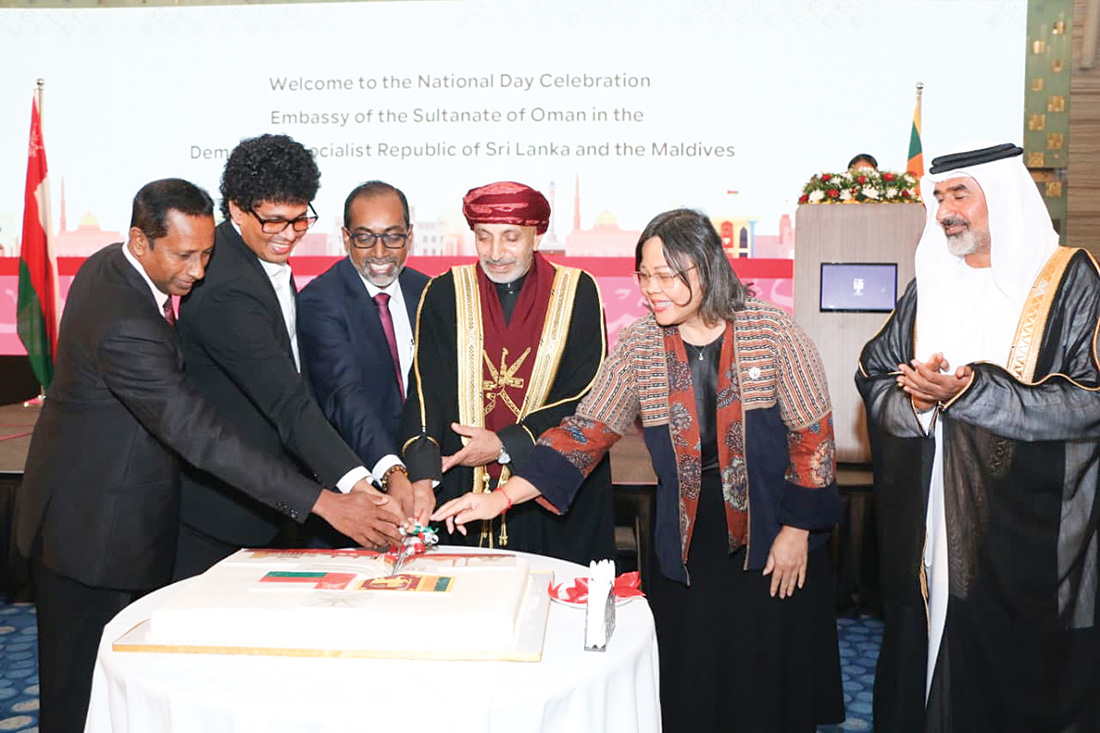
The celebration of the National Day of the Sultanate of Oman unfolded with distinguished elegance, as diplomats, dignitaries and invited guests gathered to honour the rich heritage and modern achievements of the Sultanate of Oman, under the leadership of Sultan Hatham bin Tarik.
The Ambassador of Oman in Sri Lanka Ahamed Ali Said Al Rashdi delivered a gracious and heart-felt address reflecting on the deep-rooted ties between Sri Lanka and the Sultanate of Oman.
He spoke of the region’s shared maritime history, centuries of cultural exchanges and the growing partnerships that continue to strengthen bilateral friendships between Sri Lanka and with the Sultanate of Oman.
- Former Foreign Minister Al Sabry with other guests
- The Ambassador of Turkiye Semih Lutfu Turgot with Governor of Western province Hanif Yusuf
- Gracious welcome from the Ambassador of Oman, Ahamad Ali Said Al Rashid
The Ambassador also highlighted Oman’s progress under the visionary leadership of the Sultanate, celebrating the nation’s advances in economic and regional co-operation, values that align closely with Sri Lanka’s aspirations.
One of the evening’s best highlights was the culinary journey, specially curated to offer guests an authentic taste of Omani hospitality.
The buffet unfolded a tapestry of flavours, fragrant Omani biryani, slow cooked meats, grilled seafood and an array of vibrant desserts like delicacies especially Omani dates, offering a sweet finale while the aroma of Omani coffee lingered like a gentle cultural embrace.
It was an evening that did far more than celebrate a National Day. It unfolded as a journey into the soul of Oman, wrapped in sophistication and unforgettable charm.
The glamour of the evening was heightened by the graceful flow of distinguished guests in elegant allure, warm diplomatic exchanges and the subtle rhythm of traditional Omani melody.
Life style
Under a canopy of glamour

Rainco’s touch of couture
It was a dazzling evening that merged fashion, function and fine design, as Rainco Sri Lanka’s homegrown brand synonymous with quality and craftsmanship – unveiled its new umbrella collection ‘Be my Rainco’ at Cinnamon Life setting a new standard for stylish innovation.
This event graced by a distinguished guest list of fashion connoisseurs, influencers and design enthusiasts was more than a product launch. It was a celebration of form and artistry. The highlight of the evening was a fashion showcase curated by acclaimed designer Brian Kerkovan who brought his international flair to Rainco’s refined aesthetic. Models glided down the runaway carrying striking umbrellas, their balanced elegance and engineering transforming a daily essential into statement of luxury.
Bathed in soft lighting and accompanied by an evocative musical score, the ambience exuded sophistication. The collection crafted with meticulous attention in detail, featured bold silhouettes, luxe finished and innovative textures, echoing the brand’s philosophy of merging practicality with panache.
Speaking at the launch, Rainco’s General Manager marketing and innovation, Awarna Ventures (Ltd)Gayani Gunawardena said with pride his milestone collaboration, noting how the brand’s evolution from a household essential to a symbol of contemporary lifestyle.
The evening concluded with a toast to creativity – a fitting finale for a brand that continues to inspire confidence and styles ,rain or sunshine.
(ZC)
-

 News6 days ago
News6 days agoWeather disasters: Sri Lanka flooded by policy blunders, weak enforcement and environmental crime – Climate Expert
-

 Latest News6 days ago
Latest News6 days agoLevel I landslide RED warnings issued to the districts of Badulla, Colombo, Gampaha, Kalutara, Kandy, Kegalle, Kurnegala, Natale, Monaragala, Nuwara Eliya and Ratnapura
-

 Latest News6 days ago
Latest News6 days agoINS VIKRANT deploys helicopters for disaster relief operations
-
News3 days ago
Lunuwila tragedy not caused by those videoing Bell 212: SLAF
-

 Latest News7 days ago
Latest News7 days agoDepartment of Irrigation issues Critical flood warning to the Kelani river basin
-

 Latest News4 days ago
Latest News4 days agoLevel III landslide early warnings issued to the districts of Badulla, Kandy, Kegalle, Kurunegala, Matale and Nuwara-Eliya
-

 News2 days ago
News2 days agoLevel III landslide early warning continue to be in force in the districts of Kandy, Kegalle, Kurunegala and Matale
-

 Editorial7 days ago
Editorial7 days agoNeeded: Action not rhetoric







